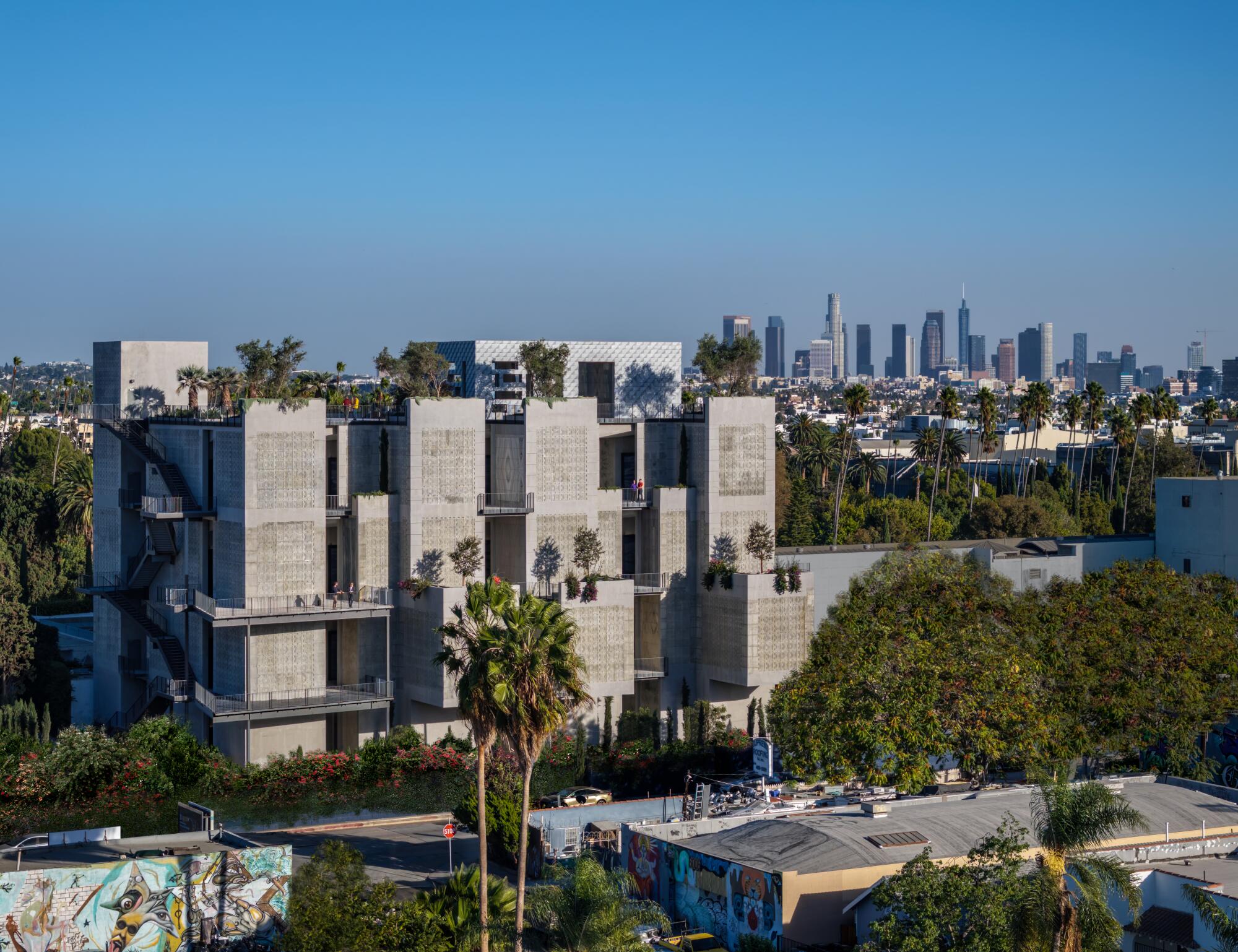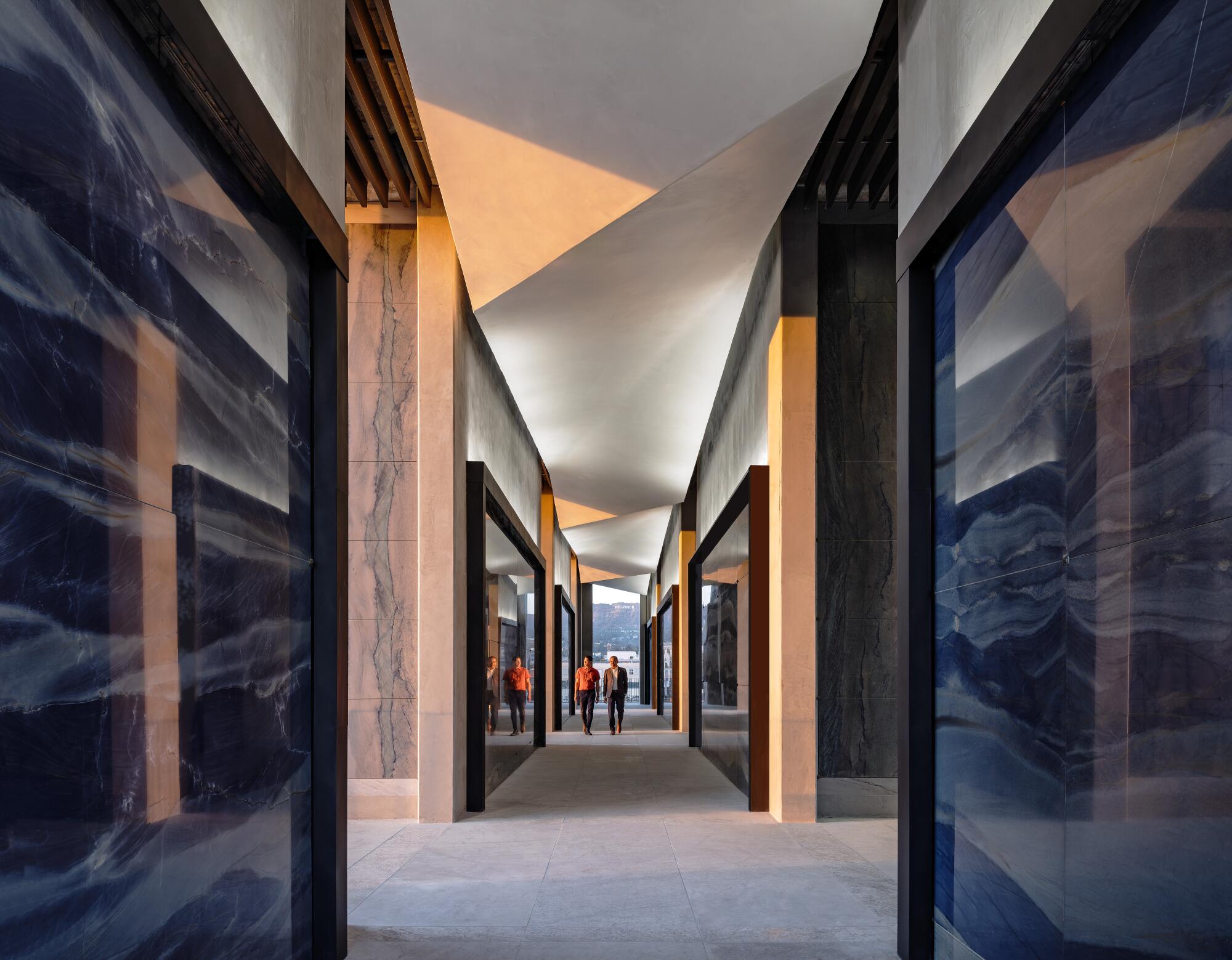Hollywood Forever Cemetery, the resting place of Rudolph Valentino, Judy Garland, Alfred Hitchcock, Cecil B. DeMille and other Hollywood royalty — not to mention contemporary icons like Johnny Ramone, Chris Cornell and Quincy Jones — has always been a place of innovation. Founded in 1899, it was one of the West Coast’s first nature-filled, stroll-friendly “lawn park” cemeteries, and in recent years it has famously, and amazingly, made itself into a citywide cultural destination for film screenings, concerts, yoga, art exhibitions and an annual Día de Los Muertos festival that draws about 30,000 people.
The latest innovation may not be immediately apparent when you visit the rolling grounds, with their meandering pathways, swaying palms and historical architecture. That is, until you look up. Way up. A 100-foot-tall, five-story mausoleum has risen along Hollywood Forever’s west edge, designed by Silver Lake-based firms Lehrer Architects and Arquitectura y Diseño, or AyD. As far as the architects and the cemetery’s owners can tell, it’s the tallest mausoleum in the country.
The idea for the Gower Court Mausoleum, which in January is set to provide (very) permanent housing for about 13,000 people — a mix of crypts for bodies and niches for urns — emerged more than 10 years ago in response to the cemetery’s finite supply of in-ground plots.
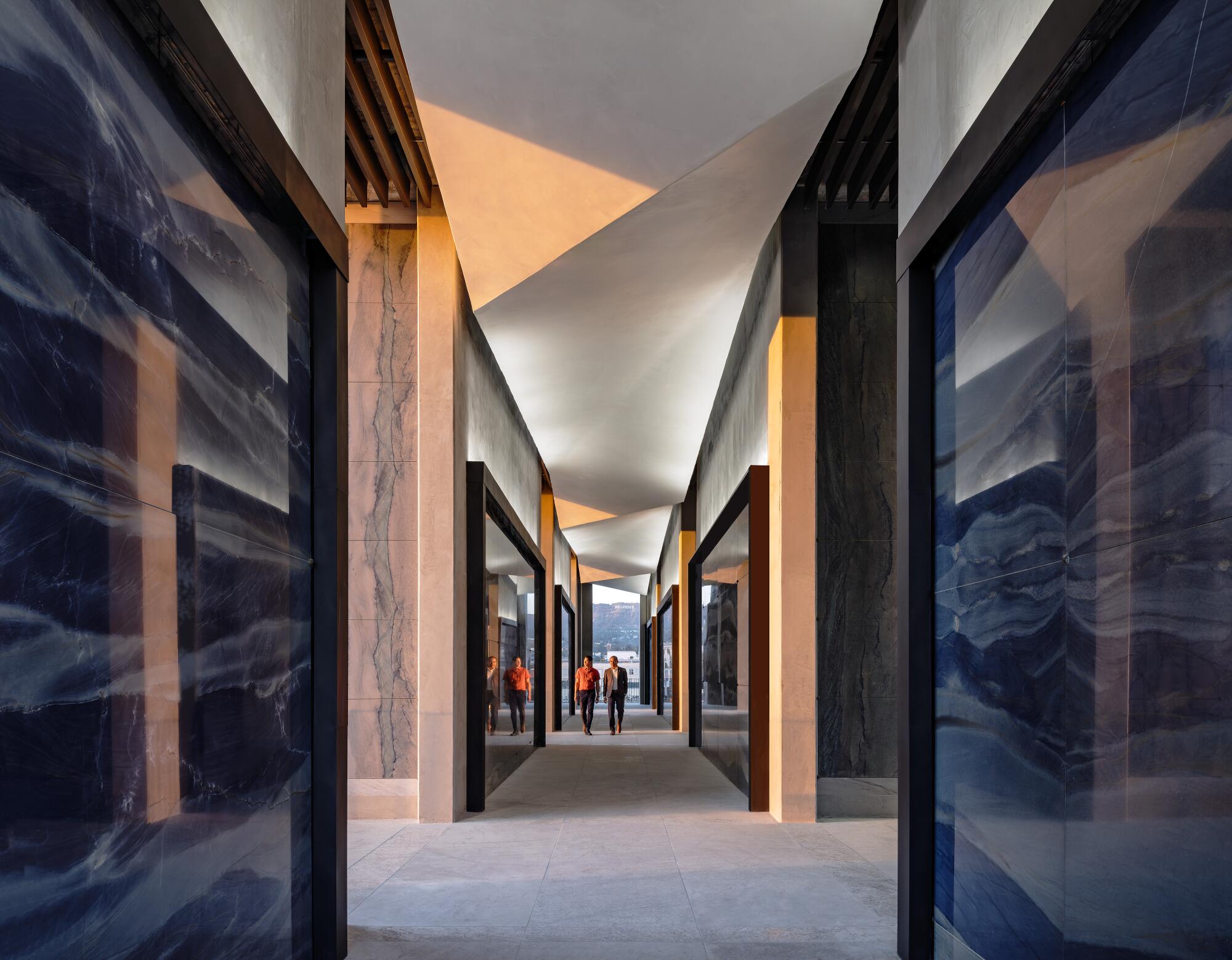
The new mausoleum’s concrete exterior is complemented by blue and white quartzite inside that reflects natural light.
(Tim Griffith)
“We’re not going to build more cemeteries in L.A., so we need to come up with creative ways to increase burial space,” said Yogu Kanthiah, Hollywood Forever’s co-owner and chief financial officer.
The cemetery still has room on its land to provide in-ground burials for three decades or more, he said, but the future need is clear. The mausoleum’s initial design, outlined by one of the country’s few crypt design-build firms, was uninspired — essentially a three-story-tall plaster box. “A garage would’ve been a compliment,” quipped Lehrer Architects founder Michael Lehrer. He and AyD founder Roberto Sheinberg envisioned something far more ambitious: an intricate tower that would be a local landmark in its own right.
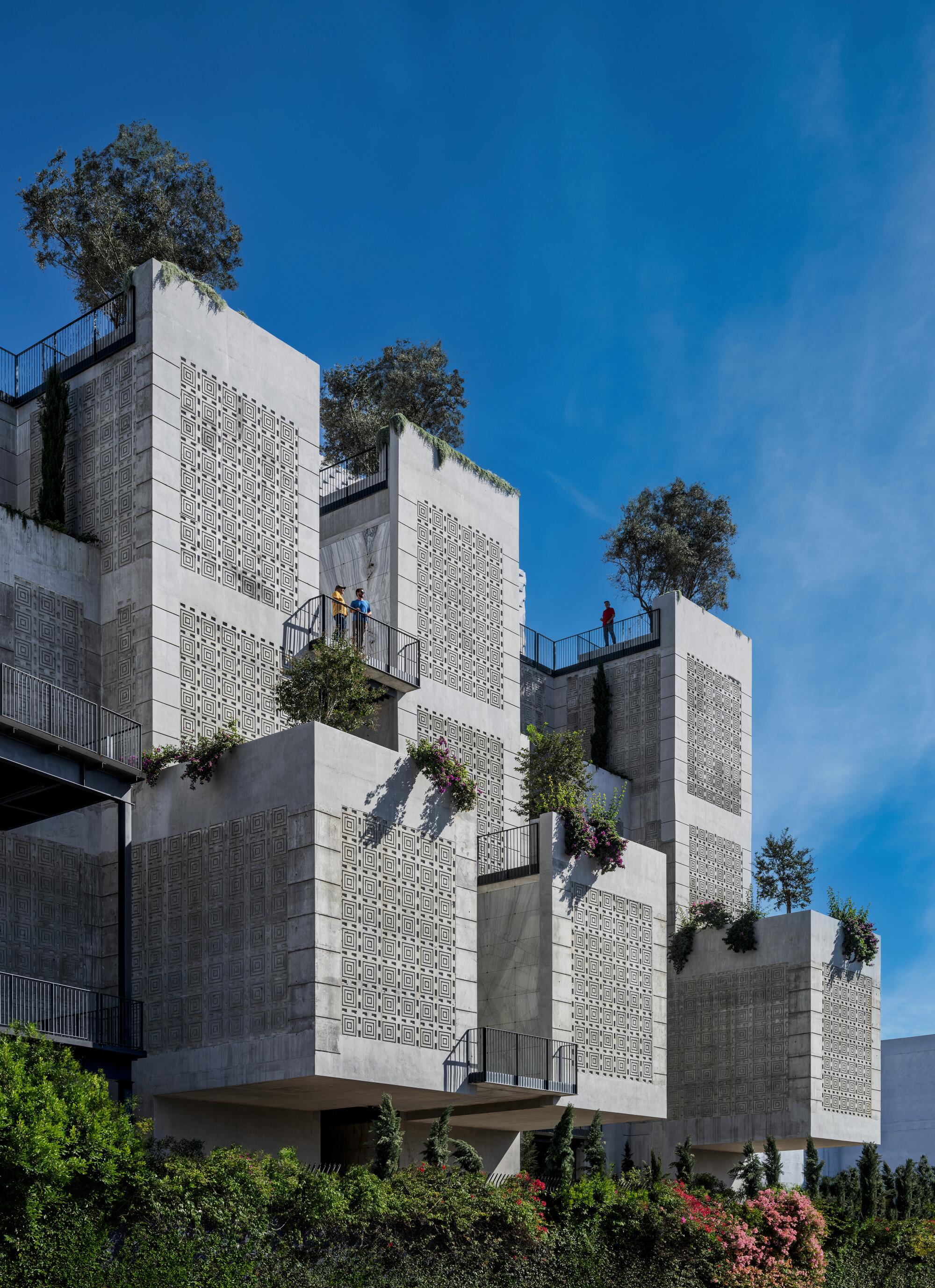
The concrete patterns of the Gower Court Mausoleum evoke Frank Lloyd Wright’s textile block architecture, seen in local landmarks such as the Ennis House.
(Tim Griffith)
Far from a monolithic wall of crypts, the reinforced-concrete structure is faced with a repeating grid of squared spirals that somewhat recalls Frank Lloyd Wright’s textile block architecture. The design integrates deeply terraced gardens that extend a stunning 20 feet from the rest of the building, large overlooks and light- and breeze-filled passageways to create what Lehrer calls a “topographical landscape,” breaking down the building’s considerable scale and enthusiastically inviting visitors inside.
“This isn’t just a storage facility for the departed,” Lehrer said. “It’s about making a place for the living to connect with the past while being inspired by their surroundings.” Added Sheinberg: “The result is something simultaneously monumental and weightless.”
No matter how “weightless” the mausoleum might appear, the hulking edifice was not an easy lift. Hollywood Forever’s owners had to invest in an ambitious design that required sacrificing some salable space to accommodate the architectural openings and protrusions.
“This is not about the money. Of course it cost more money,” said Kanthiah, who added that the cemetery was nonetheless able to cut costs significantly by building primarily with its own team. The final construction cost was about $16.5 million, he said. “We want to be different. We don’t want to have an ordinary box mausoleum.”
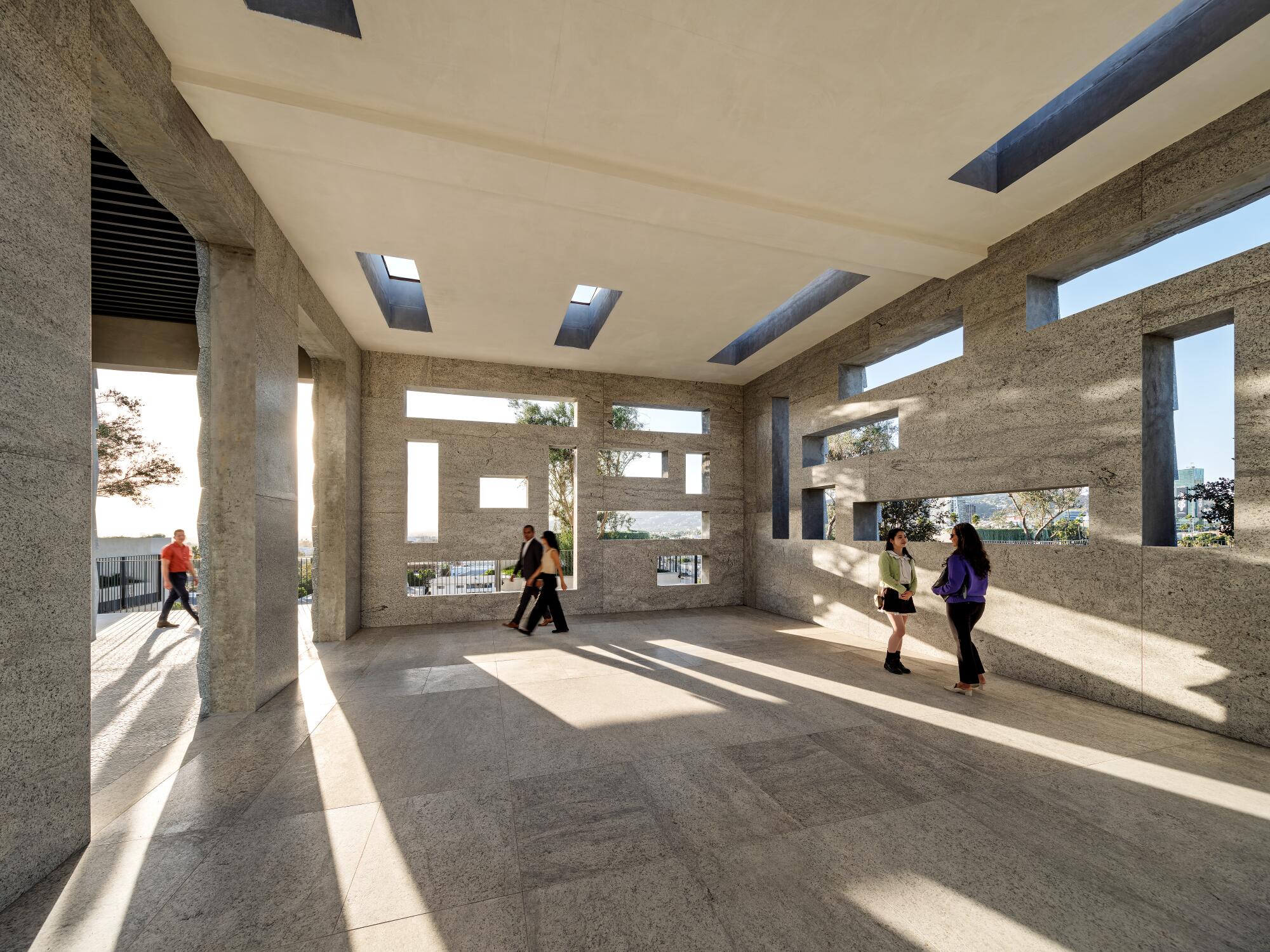
The mausoleum’s granite-clad rooftop chapel is pierced with openings to provide light, air and framed views.
(Tim Griffith)
“They understood this notion that we wanted to bring the park out into the neighborhood,” said Sheinberg. The approach, he said, helped the edifice gain unanimous approval from the L.A. City Planning Commission, City Council and the Hollywood Studio District Neighborhood Council.
Another challenge: Los Angeles had no zoning category for this kind of structure — essentially a high-rise for dead people. Officials initially wanted to classify it as housing, but the team convinced them to designate it as “storage” in order to cut down on extra costs, such as providing toilets for people who obviously would never use them. The team also had to secure a variance to exceed local height limits.
Engineering and construction were equally head-spinning. Achieving the delicate balance between vertical mass, horizontal cantilever, seismic stability and internal openness required consultations with five engineers. The firm that completed the job, Brandow & Johnston, was able to “engineer it as design,” said Lehrer. “This is a hyper hyper, hyper heavy building,” he added, noting that in addition to its 16- to 18-inch structural concrete walls, its crypts (stacked eight high per floor) each needed 3-inch-thick concrete borders, all requiring separate concrete pours.
‘A level of joy’
The new structure, as seen from across Gower Street, glows almost supernaturally, with quick-growing plantings casting long, diagonal shadows onto its patterned surfaces. These lush additions, laid out by landscape architect Studio-MLA (whose founder, Mia Lehrer, is married to Michael) essentially pull the cemetery’s landscape, with its layering of gardens, into the building itself. Resilient Mediterranean species create a textured weave of shrubs, upward-thrusting Italian cypress and olive trees (there are 40 trees total), hanging creeping fig and rosemary and radiant bougainvillea. They’re coupled with basalt benches, shallow pools and (still to come) water walls that help visitors “take your mind off the world and just be with your loved one,” said Mia Lehrer, whose firm’s landscape projects have included SoFi Stadium and the Natural History Museum of Los Angeles County. “It’s about this sort of environment that cares for you and embraces you.”
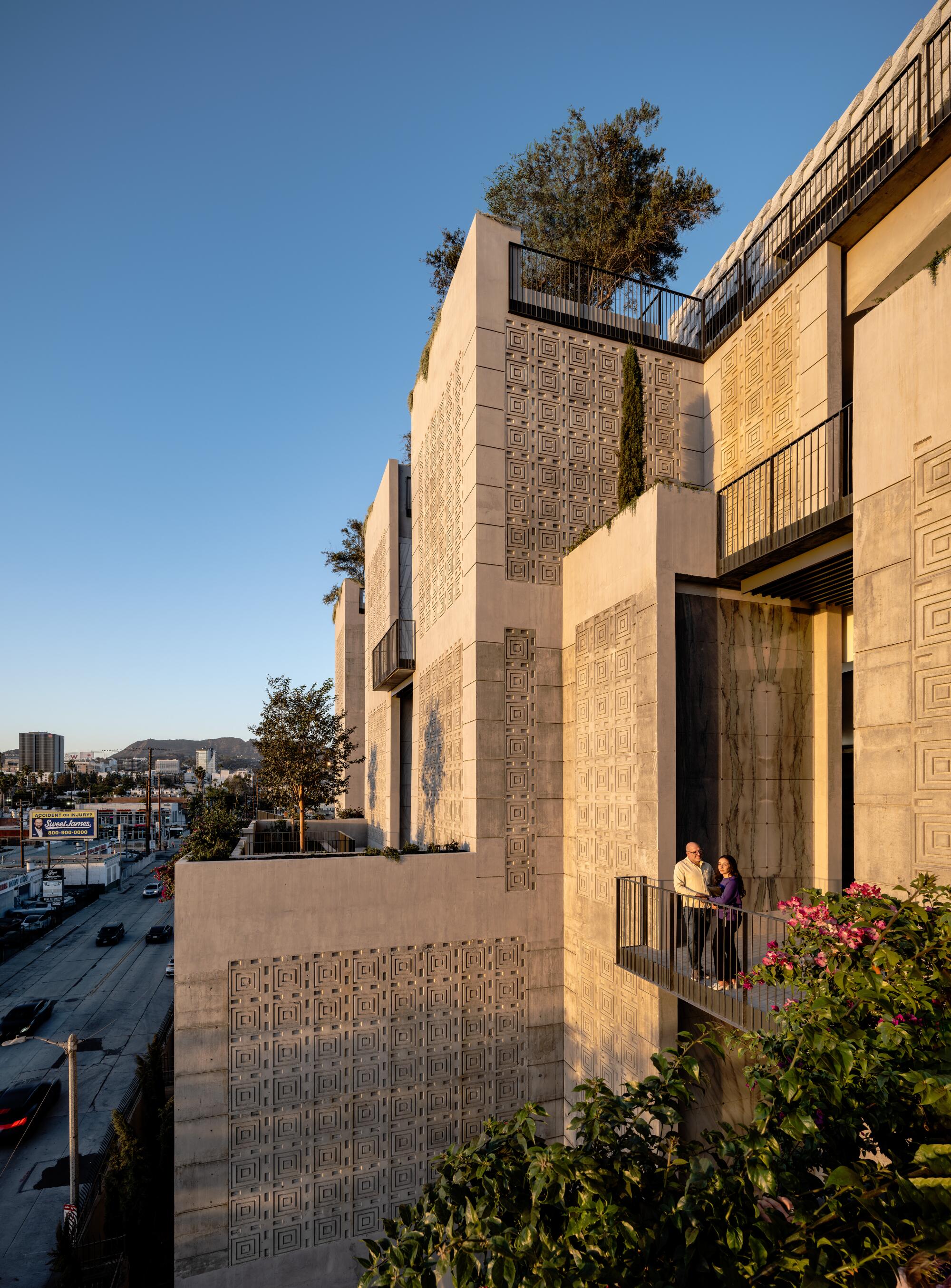
The mausoleum, aglow in afternoon light.
(Tim Griffith)
She added that the environment fits into Hollywood Forever’s refreshing evolution: “It demystifies what a cemetery is. It goes from being a really sad place to a place where there is a level of joy.”
The plantings will grow more luxuriant over time. Michael Lehrer hopes that the hybrid of hard and soft will become “a 100-foot-high topiary. … All those plants are just going to get bigger and bigger, and the building’s going to get greener and greener.”
Walking inside, you immediately sense the heft and weight of it all — not just the building’s mass but its solemn function. That sensation is tempered by the structure’s relentless upward thrust, its sizable openings (as large as 20 feet by 10 feet), the warm sun and strong ocean breezes, and the eclectic shift of materials and experiences. “It’s gravitas, literally and figuratively. But also lightness of being,” Michael Lehrer said.
Infilling the concrete frame is a mix of blue and white quartzite crypts, walls and floors (the stone was quarried in Brazil), alternately polished, honed and fired to create a dynamic mix of matte texture and reflection. Angled Venetian plaster soffits conceal mechanical systems while bouncing natural light inside and breaking the repetition of the internal grid. Stair landings and terraces at the ends of corridors vary in size and configuration, creating strategically crafted views and all types of communal experiences.
The experience is stunning enough that you might wonder what the owners could get if this were a condo building. Everything is arranged to maximize efficiency as well as inventory. The project has traditional single crypts, double-stacked “tandem” units, sideways “couch” crypts and so-called “Westminster” crypts, which contain even more space, often for families. The corridors are designed to fit coffins (and the machines that lift them). The team created still more space for crypts or urns under benches, below the soil of the rooftop garden and inside the rooftop’s chiseled granite block chapel.
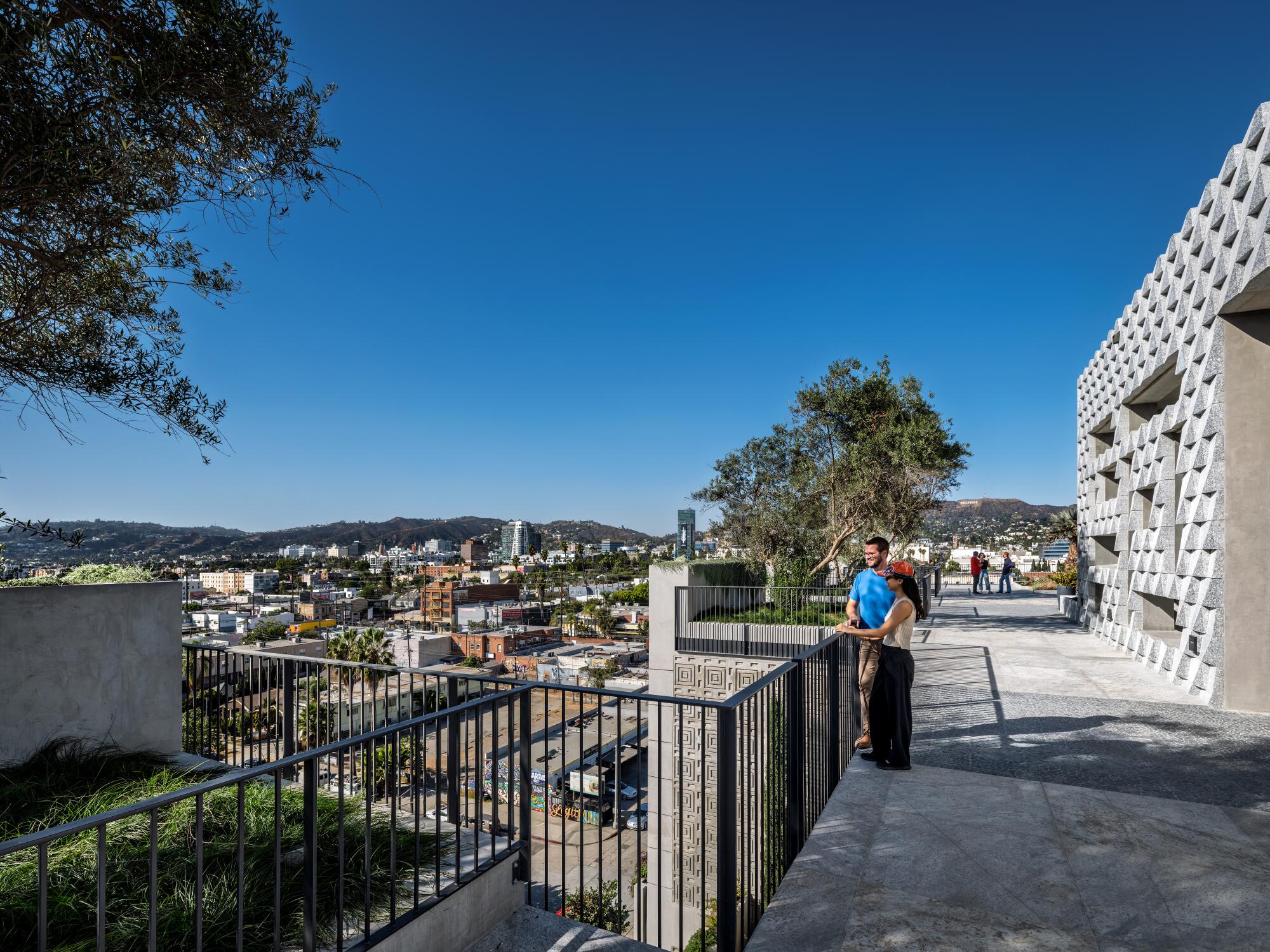
A landmark and a legacy
The architects and owners view the Gower Court Mausoleum as part of a broader conversation about how cemeteries — and cities — can honor their histories while accommodating future growth. As available space rapidly shrinks in dense places like L.A. and New York, building up in a sensitive way is a no-brainer, they said.
“This is the future of cemeteries,” Lehrer said. “Verticality is inevitable. But it can still be meaningful and beautiful.”
Kanthiah expects that the new mausoleum will become another core piece in making Hollywood Forever a community destination. It won’t host cultural events, he said, but it will hold services throughout (including on the balconies and rooftop), and like the rest of the cemetery, it will be open to the public.
“We encourage everyone to visit all of the cemetery every day,” Kanthiah said. The structure’s sweeping views of the Hollywood sign, Paramount Studios and the mountains beyond will certainly be draws.
Kanthiah noted demand shifting in favor of a mausoleum crypt or niche over in-ground burial. With spots in Gower Court starting at $12,210, two of the structure’s five floors have sold out, and the third is getting close. The team is planning to build connected additions to the north and south, housing up to 52,000 internments. Phase 2, to the south, will break ground next year, he said, adding that the cemetery has room for still more mausoleums, if necessary.
For Lehrer, the project’s success will be measured by how families and visitors alike embrace and enjoy it.
“It’s about creating something that resonates with people — architecturally, emotionally and culturally,” he said.
He sees it as part of a continuum, relating to larger themes in his work: finding creative uses for new and existing architecture, respecting context, using tactile materials, maximizing exposure to the elements and assertively incorporating landscape. These are good principles whether you’re building for the dead or the living.
Said Lehrer: “That’s how you make a place.”
